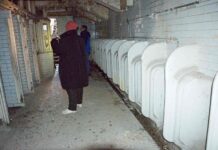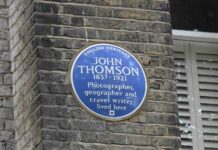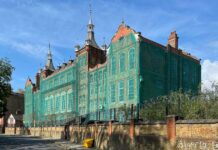The Brixton uprising
Tomorrow, 10 April, is the 40th anniversary of the start of the Brixton Uprising. Local resident Europe Singh was there …
10 April 1981 was a warm sunny day with the people of Brixton going about their business on a Friday afternoon. The market was a bustling shopping centre then, full of people getting ready for the weekend.
So the sight of police officers chasing a clearly injured Black youth down Railton Road was an unwelcome and worrying sight.
Unwelcome – and the injury worrying – but police pursuing Black youth in Brixton was far from unusual.
Embed from Getty ImagesI was a teacher in 1981 – at Vauxhall Manor, a girl’s comprehensive school with a progressive and anti-racist reputation.
I was living in the heart of Brixton with my partner Alison Jennings, also a teacher, in Mervan Road at the junction of Talma Road, right next to the Railton Road “Frontline”.
We were both anti-racist activists, challenging racism in schools and society and monitoring the behaviour of the police and authorities against Black, Asian and other minorities.
That April was a particularly challenging time for us, and Alison was heavily pregnant with our first child.
The explosive events of that weekend in 1981 put Brixton on the world map.
The young man on Railton Road was apprehended and put into a police car, but the crowds that began to gather thought that the police were arresting him, rather than taking him to hospital for medical treatment.
It was all too common for young Black men, in particular, to get rough treatment from the local force, so the crowd’s assumption was not unfounded.
A second police car was pelted by the growing crowd and wrecked.
The first vehicle did manage to drive off and take the youth for medical attention, but the crowd assumed he was destined for a cell at Brixton nick.
This was the spark that ignited Brixton’s tinder box of resentment.
That afternoon and evening there were skirmishes around Brixton between police and young, mainly Black, men.
But the real battles were fought the following day, on Saturday.
Resentment had been growing for many months.
Embed from Getty ImagesThis was Thatcher’s Britain where, like today under Boris Johnson, the rich were filling their pockets and working people of all backgrounds were struggling to survive. According to the BBC: “More than 2.5m were unemployed, with, as Labour MPs pointed out, 6,000 joining the dole queue every day.
“Trade unions highlighted the plight of the unemployed with the ‘People’s March for Jobs’ from Liverpool to London, with 500 core marchers being joined by supporters along the route.”
For Black youngsters, the situation was much, much worse. They faced racial discrimination in the job market and in getting onto government job schemes.
On top of this, young Black people faced constant harassment from the police.
It was an open secret that many local police officers were members of far-right organisations such as the National Front.
So “roughing-up a few blacks” was a favourite sport.
This was the situation in Brixton, where young people faced hopelessness and severe harassment.
Deprivation in communities up and down the country led to an increase in crime, but this was very much racially profiled in parts of big cities, in particular Brixton.
Police, not content with their already relentless stop and search programme, launched a major operation they called Swamp 81.
Many saw this as a reference to Margaret Thatcher’s statement that people were “feeling rather swamped” by immigration.
Swamp 81 began in April, with huge numbers of plain clothes officers drafted in to tackle street crime by stopping and searching individuals.
Needless to say, this focused almost exclusively on Black people in Brixton.
People of all ages, mainly men, were stopped, searched and often roughly treated.
The percentage of arrests and charges was tiny compared to the number of stops.
This was the provocation that sparked the explosion on 10 and 11 April.
Embed from Getty ImagesOn Saturday morning. we held peaceful protests outside the police station. People had gathered from all over London, Black, white and Asian.
Many rumours circulated that the youth detained the previous day had died in custody.
The peaceful protest dispersed and police decided to try to clear the streets of retreating demonstrators.
Many young people reacted and fought back as they retreated down Brixton high street.
The confrontations led to looting of shops with small numbers of policemen trying to deal with large numbers of protesters.
But this was, though dramatic, a minor event in the day.
Later that afternoon and evening, more police were drafted in with riot gear to face down the youth gathering on the Frontline.
Alison and I were intent on bearing witness to any rough treatment meted out to people being arrested, so we ventured out to observe.
Police with riot shields were massed at the junction of Kellett Road and Railton Road and were intent on driving the crowd up Railton Road in the direction of Herne Hill.
Despite the bricks and bottles being hurled, they were succeeding: pushing forward, banging their truncheons on their shields like Zulu warriors going into battle.
Then, suddenly, the balance of power shifted as petrol bombs began to crash into the police line.
The fierce battle saw the police lines begin to retreat.
Petrol bombs set fire to cars and, further up Railton Road, some buildings also caught light. The George pub was gutted.
There was jubilation that the police, for once, had been humbled, but bits of our community, as Sunday revealed, were left in rubble.
And through Saturday night and Sunday police raided homes, arresting people.
Embed from Getty ImagesWe joined the Brixton Defence campaign to try to get representation for those arrested.
The irony in the choice of the government minister to go on a staged and heavily guarded walkabout for the media the next week was not lost on Brixton’s residents.
It was home secretary Willie Whitelaw. Thatcher inadvertently revealed her attitude to feminism by declaring that: “Every prime minister needs a Willie”.
Embed from Getty ImagesHistory shows that rioting is part and parcel of British politics.
When the oppressed can no longer take the pressure of surviving and the lack of justice, they respond with whatever weapons they can muster to fight back.
Brixton sparked uprisings in other inner cities.
Things change after riots – the government set up the Scarman inquiry and seemed to be taken aback by its recommendations (many of which were not implemented).
And, for a while, money was pumped into some inner-city regeneration projects; the police reduced their stop-and-search tactics.
The saddest thing is that these changes are too often short-lived. Looking back, it is depressing that the same issues keep repeating themselves.
The Black Lives Matter movement today has revived a new push against racism.
The new policing bill is set to give police even more draconian powers to limit and punish protest.
Stop and search is once again disproportionately picking out Black youngsters. The pandemic has caused youth unemployment to soar again.
Are we heading for more uprisings?
Tell Brixton about your experience of the Uprising






